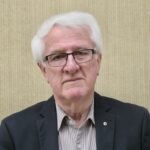Yes, it was announced in a Sunday newspaper, but this is serious: The NSW Department of Education will intervene in public schools that fail to meet performance targets in priority areas such as HSC and NAPLAN results, and other measures of success.

As the Department of Education explained it, the new School Success Model replaces Local Schools, Local Decisions (LSLD). The latter was introduced by Adrian Piccoli to enable school principals, the education leaders, to drive school innovation and improvement. Alas, as the Department laments, while the reforms enabled many schools to address local needs more effectively, it did not lead to improved results across our system.
Creating innovation, then reversing it, has become somewhat an art form in NSW education, especially around central versus local control of schools – ironically a less important issue when it comes to school and system quality. Historically education was centrally controlled until Nick Greiner decided 30 years ago to let a thousand flowers bloom, creating greater freedom of local management. The Carr Labor government had other ideas, top-down management was reasserted. The flowers still bloomed, but more in response to issued directions. Sunday’s announcement is a little different: on this occasion a Coalition government is reversing its own policy. Bets can safely be placed on how long it will last.
Local Schools, Local Decisions didn’t fail, it just wasn’t allowed to thrive, and certainly didn’t prove to be the magic bullet solution preferred by politicians, despite their endless search for such solutions. Recent research by Maurice Brunning actually points to a depressing continuity: LSLD was never sufficiently ‘local’ and it ran up against NSW Education’s one-size-fits-all ethos. Principals found that top-down, centralist and compliance-based policy constrained their leadership, effectively placing a ceiling on their real-world effectiveness. LSLD wasn’t sufficiently ‘local’, and ‘decisions’ had to overcome decades-old hurdles.
Another important point is raised by that research. The school principals posited that to improve their situation, the system would require a deeper understanding of change processes, how they operate in functioning schools, and an acceptance of shared responsibility for ensuring that sustainable change was achievable. The proposed School Success Model doesn’t reflect any such deeper understanding. Interestingly, it does say that everyone in the education system will now share responsibility for improvement. Bets could also be placed on the future success of that decision.
The main problem of the School Success Model is in the way it targets and scales up good practice. Successful schools are best identified by a combination of data and thorough professional reviews of practice. But the identification of deficiencies and success in this new scheme won’t include the latter – school reviews on the scale required were largely abandoned in NSW years ago. On the plus side, the target areas for success see Aboriginal education, attendance, student growth and post-school destinations added to measures of NAPLAN and the HSC. The problem is that, while we’ve long acknowledged the wider purposes of schooling, it is the test scores which will most likely shape the conclusions drawn about schools.
There are many innovative schools in New South Wales that are high achievers in these other areas. Big Picture schools, for example, record high attendance and retention, and outstanding student growth. Almost all their students transit to employment and/or higher education. NAPLAN scores vary, and not all students want, or need, a Higher School Certificate. How might such schools rate in a “success model” that risks diminishing the scope and impact of their efforts and success?
How will the School Success Model address the beyond-school impacts on student achievement: how “success” is distributed amongst schools and how this changes over time? It won’t. Like the parade of school reforms over the last two decades it proceeds as if these factors don’t exist – despite mounting evidence to the contrary. Arguably, such reforms are designed to distract from the massive and decades-old structural failure in the way we provide and resource schools. Unlike many other countries, Australia is avoiding this problem – preferring to recycle inadequate and even discredited school reforms.
Chris Bonnor is co-author, with Jane Caro, of What makes a good school.
Chris Bonnor is a former teacher and secondary school principal, a previous head of the NSW Secondary Principals’ Council, co-author with Jane Caro of The Stupid Country and What Makes a Good School, and co-author of Waiting for Gonski. He has jointly authored papers on Australia’s schools in association with the Centre for Policy Development and the Gonski Institute for Education.

Comments
2 responses to “The failing pursuit of school success in NSW”
Regrettably it is just not schools in NSW that have suffered from over-centralisation and a “command and control” system of management by a Head Office. In the 1990s one of the few recent Managing Directors of TAFE NSW to have an educational background , Gregor Ramsey, introduced the decentralised Institute model. Despite achieving the largest TAFE enrolments and consistently remaining within budget – this model was swept away into a centralised “oneTAFE” model. Here the emphasis was on centralised course development, minimising control by teachers and local educational managers. It was almost as if these non teachers believed in what the great Kaye Schofield once disparaging called “teacher proof” curriculum. There is nothing wrong with high quality learning resources including those available online. But as OFSTED has shown in the UK after observing thousands of sessions, local teacher input to customise the learning experience to the very diverse needs of students such as are typical in TAFE is critical for learning to happen. As a recent Audit Office Report has shown the one TAFE model before Covid suffered from declining enrolments, falling income and the failure to replace adequately core systems such as those to enrol and manage students. More management speak will not help – TAFE teachers have had ongoing change management for two decades with little real change for them. TAFE needs to reinvigorate through staff development and recruitment its teaching workforce – this is not easy as TAFE teachers need to be dual professionals – industry experts and teachers. It is a pity that the members of the TAFE Commission Board who advocated for oneTAFE have not accepted responsibility for its short comings. As the Audit Office is due to publish a report on the implementation of oneTAF one can only hope those responsible eventually accept their accountability.
Good onyer Chris! Basically I exited the NSW Schools system almost 30 years ago – since which any glance at what has been going on has been as clear as jargon-thick mud. Had I remained (and not gone abroad) I might in fact only be retired five or six years – I am not in my 90s. Not yet, anyway – aiming for that age though. I listened recently to a god-daughter speak to her role as a teacher – and of the many years she was a relief teacher – on year long contracts (maternity leave replacement and so forth). She used a form of language I found confusing – but which is clearly the register employed by those in teaching and administering – and I wondered why! In a Don Watson Weasel word kind of analysis – what is that jargon designed to hide. Well, NAPLAN, socio-economic disadvantage, the theft by the private and-for-profit education sector of funds which should be with our public education system – and I remain committed to the principles of DOGS which I first came across during some relief teaching at JJCahilL Mem. HS in 1979 (where I had done my Sydney University Dip-Ed year-long prac teaching in 1970). I’ve recently read Brian James (John Tierney) The Advancement of Spencer Button – and his next novel based on Homebush Boys HS – Hopeton High. Would that he were still alive to write an equivalent exposé on these current times!